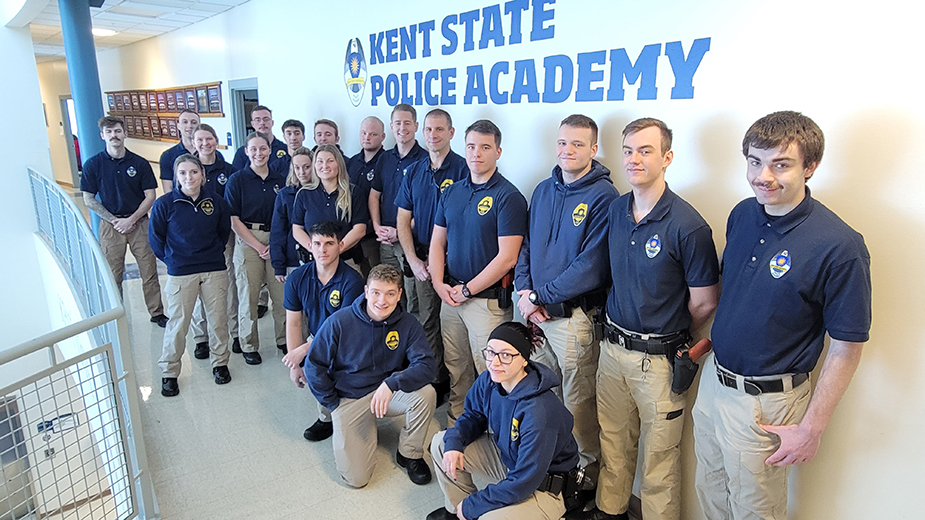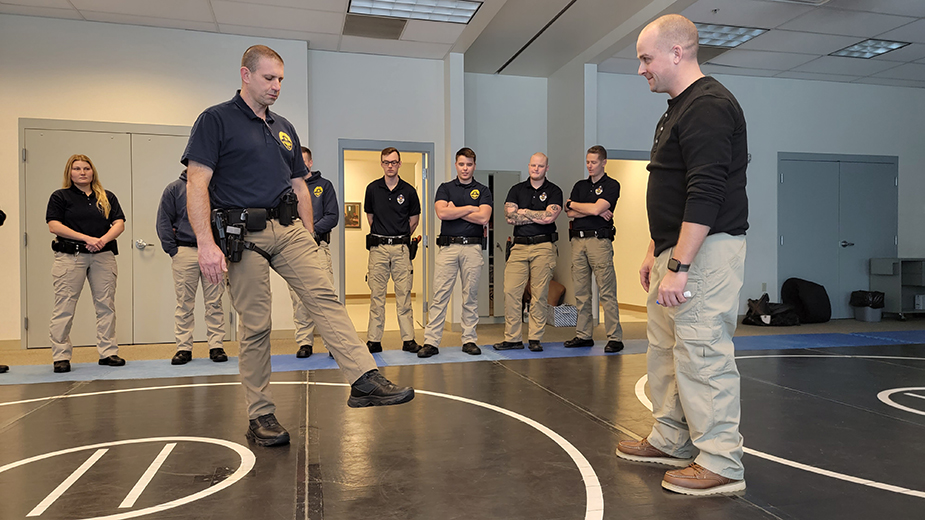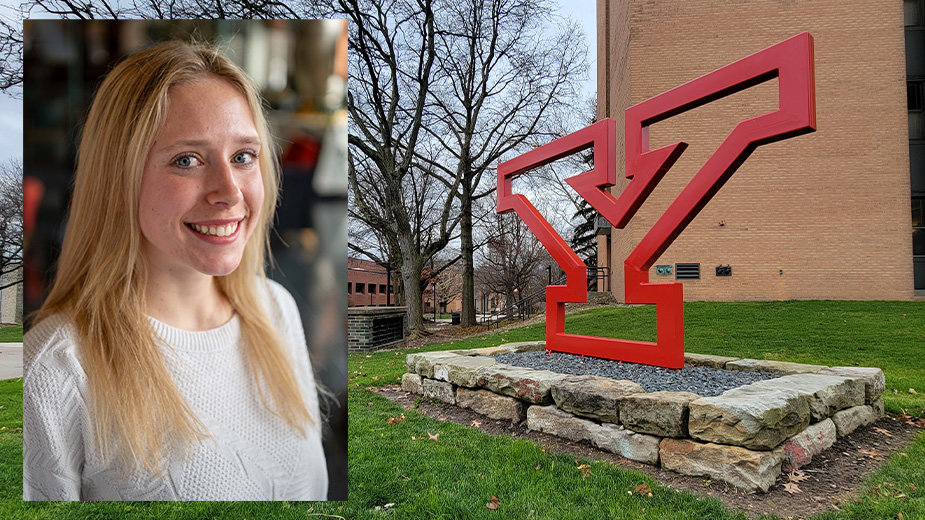Greater Incentives Arise for Police Academy Cadets
YOUNGSTOWN, Ohio – Jim Willock says the opportunities available to police cadets today were unheard of 10 to 15 years ago.
However, the tight labor market has made it difficult to draw young people into the force, leaving police training professionals concerned.
“We are in a crisis right now in law enforcement, as far as recruiting,” says Willock, the director of public safety and police academies at Kent State University.
Willock, who oversees the training programs across eight of KSU’s campuses, says he’s never seen circumstances like this.
“When I started as a police officer back in the 1990s, I had to work part time – I had to work three jobs,” he recalls. “A lot of people would go work for the sheriff’s department and put in three times before they could even get a job. Almost all of my cadets are leaving the academy and making $70,000 a year right now.”
Departments are now offering sign-on bonuses, and agencies are offering to pay cadets’ tuition in the academy, which Willock says was “unheard of 10 years ago.”
“I know of agencies where police officers are now making six figures,” he says. “That was never heard of before.”
As a young police officer, Willock says it may have been 10 years before officers could get weekends off or 15 years before they could get a day shift. He says this is no longer the case.
While there are a lot of benefits to entering law enforcement careers, William Holland, commander at The University of Akron/Summit County Sheriff’s police academy, says there are many requirements for joining the training program. Holland’s program has seen almost 500 cadets since its start in 2014.
“You must meet the age limit. You have to have a valid driver’s license, no felony convictions and there are some other background qualifications,” he says. “You also have to pass the initial physical fitness requirements.”
Once all the requirements are met, the program is 740 hours of mandatory training. Topics include firearms, driving and field sobriety tests.
Different police academies have varying hours, with the minimum being 737 hours, but some go over 800 hours.
“Some of it’s in the classroom and some of it is hands-on practical [learning],” Holland says. “There are tests along the way. Then, at the end of the academy, they have to pass a final physical fitness assessment, which is bound by the Cooper Standards.”
The Cooper Standards are the standard fitness requirements required for cadets prior to joining the academy.
“If they pass the physical fitness assessment at the end, they are then able to take the written examination,” Holland says. “After successful completion of that, they are able to work as a law enforcement officer in the state of Ohio and they find a job.”
Although there is no maximum age, police officers in the state of Ohio must be at least 21 years old, Holland says. Within his academy, he has seen students as young as 19 and as old as 61.
Holland says he is able to get a “head start” because of the amount of time he is able to spend with students prior to them being hired. The academy has had students go to more than 100 law enforcement agencies in the state of Ohio.
“They apply for jobs or they come to work for the sheriff’s office,” he says. “We’ve hired well over 100 people out of our academy.”
The salary range for students varies greatly, Holland says.
“Some agencies, especially if it is part time, can start out fairly low,” he says. “Some of them approach $100,000 a year.”
“When you get into this type of work or work for the government, it is not necessarily salary,” Holland adds. “You got that base salary, but you also need to consider the availability for extra details – if you’re working a football game or extra work, overtime, the pension systems. There aren’t that many jobs around anymore where you can work until a certain age, stop working and then you get paid for the rest of your life.”
Both Kent State University and the Akron programs are recognized as STAR Academies by the Ohio Attorney General’s office.
Kelly May, public information officer for the office of Ohio Attorney General Dave Yost, says this title is for police academies that go “above and beyond.”
Aside from meeting the minimum required hours, STAR Academies must meet at least a dozen extra criteria, which were established by a peer board.

Some of these requirements include ensuring that minimums of 85% of the program’s cadets pass the State Certification Exam, a minimum of four periodic academic assessments, providing an additional 15 hours of training in at least three high-risk topics and use of tech training, such as body cameras.
In addition to the local STAR Academies, a new police-training program is completing its first run-through. On Sept. 12, Allan Young, commander of the Columbiana County Career & Technical Center police academy, launched his police academy.
“There are 13 different modules, and each module has subsections that encompass different [aspects] of the police career,” he says.
Young says he went through basic training and was hired at the sheriff’s office. He worked as a supervisor, in the detective bureau, in narcotics and, finally, in K-9 – each of which took some additional training.
“I moved around a little bit, but all because of the basic training I took way back in the day,” Young says.
The CCCTC police academy program’s goal is to set the groundwork that students can build off for any of these career choices.
In Columbiana County, Young says he expects students to make a starting wage of $18 to $24 an hour after completing the program.
Young says he laid a lot of the groundwork for the program. As a previous member of the sheriff’s office, he has a lot of contacts in law enforcement-adjacent careers.
“My goal was to put these six people out on the street and give them good quality jobs so they can start working and not only make something of themselves, but help the citizens around them come out of it a little bit better too,” he says.
Every police department in Columbiana County is looking for people, Young says.
Young is gearing the program toward the “working person” as well, who may already have a family and work a 40-hour job. That is why he says it is important to maintain the night-class availability.
“We are gearing it to the working person so they can get the education they need and still be able to support themselves and their family while doing so,” he says.
Kent State University’s Willock says he is optimistic as he watches the upcoming generations of police academy students.
“I know law enforcement has kind of taken a beating over the last 10 years, but I think I am seeing really good people that want to be part of making it better,” he says.
“What I’m seeing is that we have really good people that really want to go out there and make a difference in our communities.”
Pictured at top: KSU at Trumbull instructor Charles Hoskin, right, and cadet Paul Carlson doing field sobriety training.
Copyright 2024 The Business Journal, Youngstown, Ohio.



